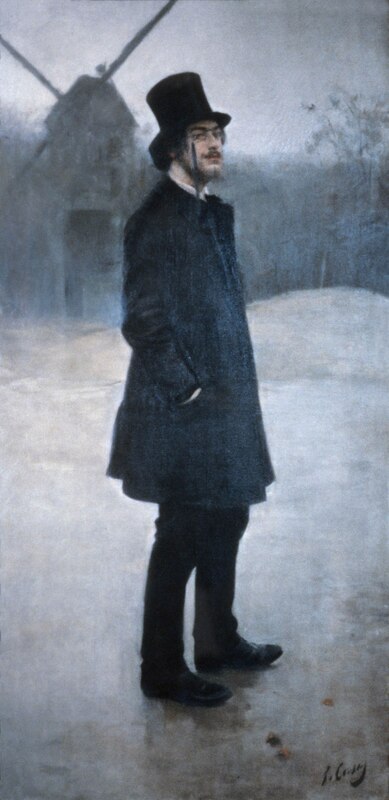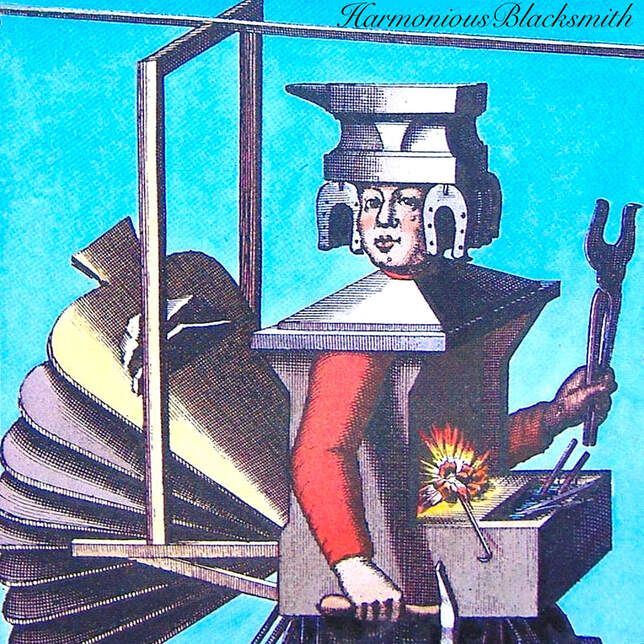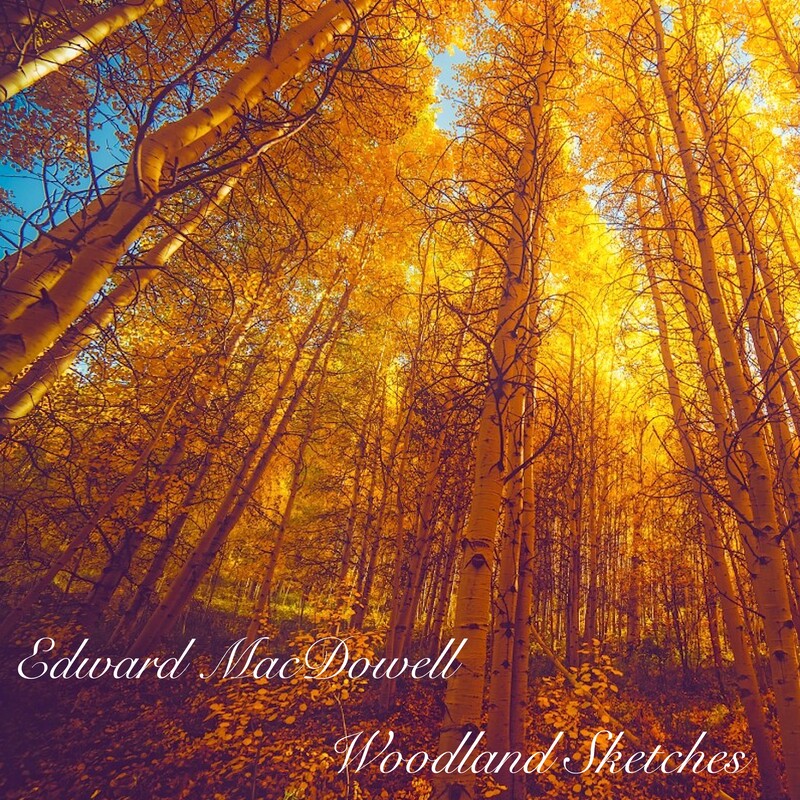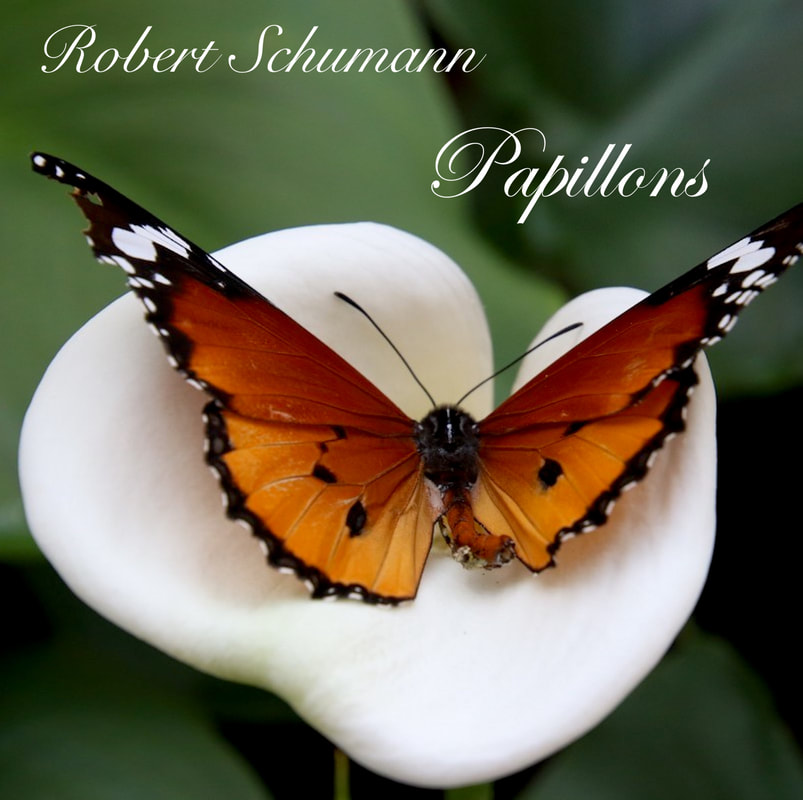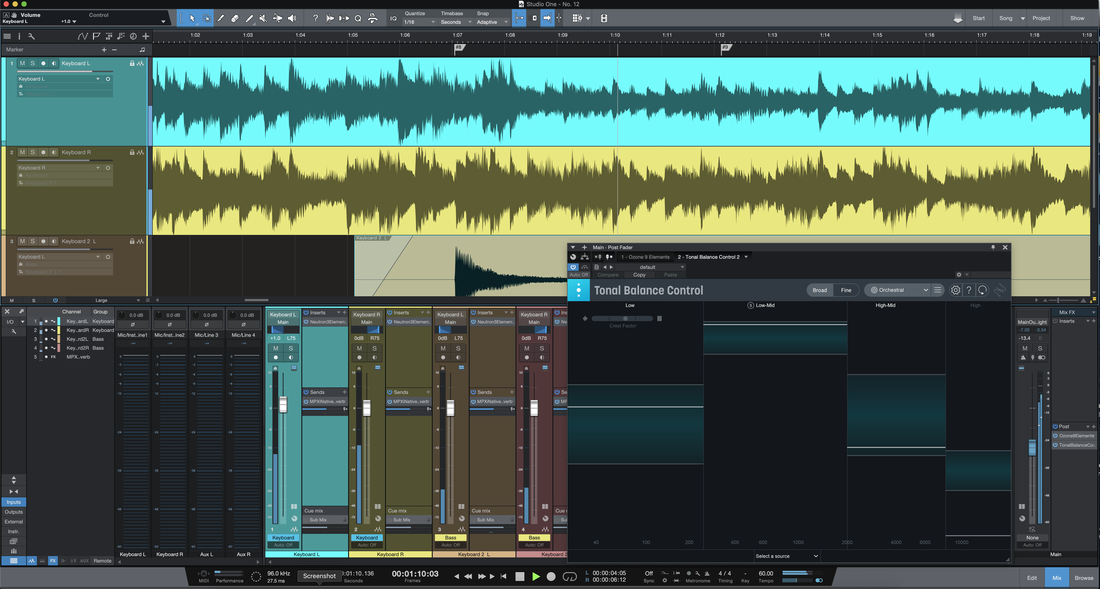Many of the musical tracks below are available free from the Internet Archive site. These high-quality (96kHz, 24 bit) WAV and FLAC audio files may be downloaded for open use through Creative Commons licensing.
Click here to visit my page at the Internet Archive.
Click here to visit my page at the Internet Archive.
Erik Satie Gnossienne et Gymnopedie
The two sets of piano pieces, Gnossienne (1893) and Gymnopedie (1888), were composed by the Parisian
Erik Satie (1866 - 1925) as a step into Modernism, away from the Romanticism of late nineteenth-century Europe. These minimalist, avant-garde pieces are comprised of simple modal melodies of far-east influence and of sparse chordal accompaniment at very slow tempi. They are highly experimental in their musical form, rhythm, harmony, and spare (open) texture. Although the music is described by some as emotionally detached and calming, I feel it does cast an eerie, melancholic mood.
In these performances, the musical pieces are “orchestrated” using synthesized virtual instruments. A harp-like Japanese koto sound is used to express the haunting modal melodies. Slow-string and new-age synth pads are used to provide the sustained bass tones and open harmonies. This unusual combination of sounds seems fitting for this unconventional music.
Click the following links to listen to high-resolution (96kHz, 24-bit WAV) recordings of these works.
The two sets of piano pieces, Gnossienne (1893) and Gymnopedie (1888), were composed by the Parisian
Erik Satie (1866 - 1925) as a step into Modernism, away from the Romanticism of late nineteenth-century Europe. These minimalist, avant-garde pieces are comprised of simple modal melodies of far-east influence and of sparse chordal accompaniment at very slow tempi. They are highly experimental in their musical form, rhythm, harmony, and spare (open) texture. Although the music is described by some as emotionally detached and calming, I feel it does cast an eerie, melancholic mood.
In these performances, the musical pieces are “orchestrated” using synthesized virtual instruments. A harp-like Japanese koto sound is used to express the haunting modal melodies. Slow-string and new-age synth pads are used to provide the sustained bass tones and open harmonies. This unusual combination of sounds seems fitting for this unconventional music.
Click the following links to listen to high-resolution (96kHz, 24-bit WAV) recordings of these works.

© 2024. This work is openly licensed via CC BY 4.0.
Erik Satie: Gnossienne No. 3
Erik Satie: Gymnopedie No. 3
Erik Satie: Gnossienne No. 1
Erik Satie: Gymnopedie No. 1
Erik Satie: Gymnopedie No. 3
Erik Satie: Gnossienne No. 1
Erik Satie: Gymnopedie No. 1
Georg Friedrich Handel The Harmonious Blacksmith
Georg Friedrich Handel composed his Keyboard Suite No. 5 in E Major, HWV 430 in 1720. The first movement is a Prelude. The fourth and final movement consists of a Theme (Air) and five Variations that collectively have become known as "The Harmonious Blacksmith" (a name not given by Handel). The Air is in rounded binary form with two musical phrases. The Variations, or Doubles, are composed in the English division-on-a-ground style. The Harmonious Blacksmith melodies became quite popular and are quoted in several other composers' works. Notably, the Italian guitarist-composer Mauro Giuliani used the theme as the basis for his Variazioni su un tema di Handel, Op. 107, for solo guitar in 1828.
I have recorded selections from The Harmonious Blacksmith using synthesized nylon-string guitar voices for both the left and right hands in these keyboard pieces. These two voices were recorded simultaneously in a "live" keyboard performance, giving the effect of a guitar duet arrangement of these musical works.
I have recorded selections from The Harmonious Blacksmith using synthesized nylon-string guitar voices for both the left and right hands in these keyboard pieces. These two voices were recorded simultaneously in a "live" keyboard performance, giving the effect of a guitar duet arrangement of these musical works.
Woodland Sketches, Op. 51, is a suite of ten short piano pieces by the American composer Edward MacDowell. It was written during an 1896 stay at MacDowell's Peterborough, New Hampshire, summer retreat. Each piece is inspired by a different aspect of the surrounding nature and landscape. Several of the pieces are notable for their development of an American impressionistic technique in their depiction of the New England wilderness, while some of the others are based on elements from Native American and Appalachian music.
No. 1 “To a Wild Rose” With simple tenderness A Major
"To a Wild Rose" is probably MacDowell's best known single work. The piece begins with a spare melody, based on a simple one from the Mohegan/Brotherton Indians. The melody is played in short fragments and accompanied by open chords and pedal points. The high point of the piece consists of a repeated dominant ninth chord, which is heard as a version of the Tristan chord. The sketch concludes with a Scottish snap rhythm.
"To a Wild Rose" is probably MacDowell's best known single work. The piece begins with a spare melody, based on a simple one from the Mohegan/Brotherton Indians. The melody is played in short fragments and accompanied by open chords and pedal points. The high point of the piece consists of a repeated dominant ninth chord, which is heard as a version of the Tristan chord. The sketch concludes with a Scottish snap rhythm.
No. 3 “At an Old Trysting Place” Somewhat quaintly, not too sentimentally A-flat Major
"At an Old Trysting Place" is the shortest piece in the suite, and is an example of MacDowell’s impressionistic and economic chordal style. It consists of a "long-breathed" melody, in contrast to the melodic fragments in "To a Wild Rose".
"At an Old Trysting Place" is the shortest piece in the suite, and is an example of MacDowell’s impressionistic and economic chordal style. It consists of a "long-breathed" melody, in contrast to the melodic fragments in "To a Wild Rose".
No. 8 “A Deserted Farm” With deep feeling F-sharp minor
"A Deserted Farm" is the quintessence of MacDowell's style. He was inspired by an abandoned farmstead that he and his wife had come across on one of their walks. The piece opens and ends with a sad desolate theme in the minor key. This is contrasted by a middle section in the major key, marked "pianissimo, as heard from afar" to indicate echoes from a happy past life on the farm.
"A Deserted Farm" is the quintessence of MacDowell's style. He was inspired by an abandoned farmstead that he and his wife had come across on one of their walks. The piece opens and ends with a sad desolate theme in the minor key. This is contrasted by a middle section in the major key, marked "pianissimo, as heard from afar" to indicate echoes from a happy past life on the farm.
No. 10 “Told at Sunset” With pathos F minor
The tenth and last piece, "Told at Sunset", recalls thematic motifs from earlier sketches, particularly from "At an Old Trysting Place" (No. 3) and “A Deserted Farm” (No. 8). The opening section quotes a theme very similar to "A Deserted Farm", which dies away before a new theme grows louder and then also dies away. The middle section of the sketch is a brisk march with staccato chords and many Scottish snap rhythms. In the concluding section, a more expressive form of the theme from "A Deserted Farm" returns before reaching the finale: silence followed by solemn chords from the finale of "From an Indian Lodge" (No. 5) that begin soft, but finish in fortissimo.
The tenth and last piece, "Told at Sunset", recalls thematic motifs from earlier sketches, particularly from "At an Old Trysting Place" (No. 3) and “A Deserted Farm” (No. 8). The opening section quotes a theme very similar to "A Deserted Farm", which dies away before a new theme grows louder and then also dies away. The middle section of the sketch is a brisk march with staccato chords and many Scottish snap rhythms. In the concluding section, a more expressive form of the theme from "A Deserted Farm" returns before reaching the finale: silence followed by solemn chords from the finale of "From an Indian Lodge" (No. 5) that begin soft, but finish in fortissimo.
Papillons, Op. 2, is a suite of piano pieces composed in 1829 and 1831 by Robert Schumann. Invoking the scene of a grand ball, the suite begins with a very brief introduction, followed by a variety of dance movements in 3/4 and 3/8 time. Schumann made use of recurring themes in several of the pieces, including the traditional Grandfather's Dance which was always played at the end of celebrations. Repeated "A" notes in the upper register ring out at the end of the final piece, suggesting a clock striking the hour of the ball's conclusion.
|
Introduzione - Moderato (D Major)
No. 1 - Waltz (D Major) |
|
No. 2 - Prestissimo (A-flat Major)
|
|
No. 3 - (f-sharp minor)
|
|
No. 4 - Presto (f-sharp minor)
|
|
No. 5 - Polonaise (B-flat Major)
|
|
No. 6 - (d minor)
|
|
No. 7 - Semplice (f minor / A-flat Major)
|
|
No. 8 - Waltz (c-sharp minor / D-flat Major)
|
|
No. 10 - Vivo ( C Major)
Piu lento (G Major) Waltz (C Major) |
|
No. 12 - Finale (D Major)
|
